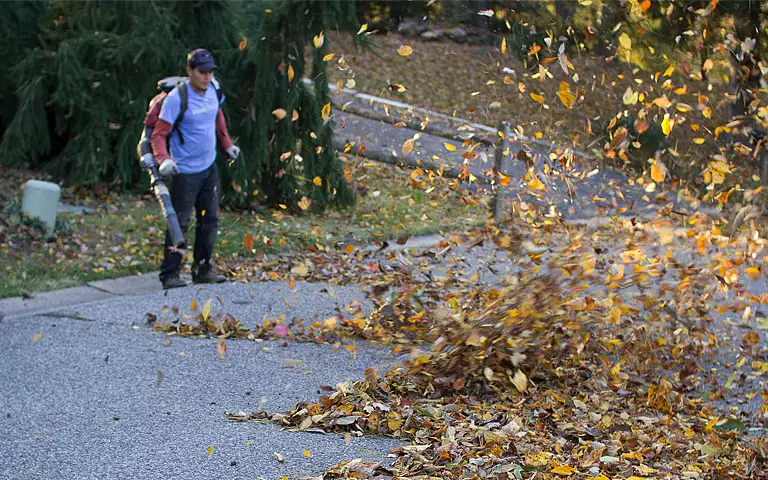7 Benefits of Fall Perennial Pruning
As the days grow shorter and the nights get colder, chills creep throughout the air. Our garden landscapes begin their transition into winter dormancy.
But before you hang up your gardening gloves for the season, there’s one critical element in a fall clean-up that can set your perennials up for success for the next spring season, that’s fall perennial pruning.
FALL PRUNING
While it may seem counterintuitive to cut back plants as they’re winding down, a well-timed pruning can offer many benefits. Like preventing disease, controlling pests, and keeping your place looking its best!
So let’s dive into the world of Fall Perennial Pruning!
Here are 7 benefits of pruning your perennials in the fall:
Disease Prevention: Removing dead or dying foliage helps prevent diseases from overwintering on the plant and spreading in the spring. This is especially important for plants susceptible to fungal diseases like powdery mildew (e.g., Phlox, Bee Balm).
Pest Control: Pruning removes potential hiding places for pests and their eggs or larvae. This can reduce pest problems next spring.
Improved Appearance: Tidying up the garden in the fall removes the messy look of dying foliage and creates a cleaner look for the winter landscape.
Reduced Spring Workload: Pruning in the fall means less work in the spring when you’re busy with new growth and planting.
Prevent Self-Seeding: Some perennials spread aggressively by seed. Fall pruning can help control unwanted seedlings.
Encourage Stronger Growth: For some plants, fall pruning can encourage bushier growth next spring.
Winter Interest: While you’ll prune some perennials, leaving others standing can provide visual interest and valuable habitat for wildlife during the winter months. Seed heads of Coneflowers, for example, provide food for birds.
Below are some perennials that thrive in the Glen Mills, Chadds Ford, Garnet Valley Media PA & Wilmington DE area, keeping in mind fall pruning needs:

Deadheading the spent blooms encourages more flowers, cut back to the base in the Fall.
- Drought tolerant: Can withstand periods of dry weather once established.
- Long blooming season: Provides color from mid-summer to fall.
- Attracts pollinators: Bees, butterflies, and other beneficial insects love them.
- Easy to grow from seed: A great choice for beginner gardeners.

Another pollinator favorite! Cut back in late fall or winter, you can even cut them back in early spring.
- Medicinal properties: Known for its immune-boosting properties.
- Deer resistant: Rarely bothered by deer.
- Adaptable to various soil types: Can tolerate clay, loam, or sandy soil.
- Provides winter interest: Seed heads provide food and shelter for birds.

A light trim after the first bloom encourages a second flush of flowers. Cut back in fall or spring to maintain shape.
- Deer and rabbit resistant: Unpalatable to these common garden pests.
- Attracts beneficial insects: Helps to control harmful pests.
- Drought tolerant: Thrives in dry conditions.
- Long blooming period: Can bloom for several months with proper care.

Deadheading the spent blooms encourages more flowers, Cut back to the base in the Fall.
- Drought tolerant: Can withstand periods of dry weather once established.
- Long blooming season: Provides color from mid-summer to fall.
- Attracts pollinators: Bees, butterflies, and other beneficial insects love them.
- Easy to grow from seed: A great choice for beginner gardeners.

Deadhead to encourage more blooms. Cut back in late fall or early spring.
- Used in herbal remedies: Traditionally used for wound healing and other medicinal purposes.
- Attracts ladybugs: These beneficial insects help control aphids and other pests.
- Tolerates poor soil: Can grow in a variety of soil conditions.
- Drought tolerant: Once established, it requires minimal watering.

A light trim after the first bloom encourages a second flush of flowers. Cut back in fall or spring to maintain shape.
- Deer and rabbit resistant: Unpalatable to these common garden pests.
- Attracts beneficial insects: Helps to control harmful pests.
- Drought tolerant: Thrives in dry conditions.
- Long blooming period: Can bloom for several months with proper care.

Deadheading the spent blooms encourages more flowers, Cut back to the base in the Fall.
- Drought tolerant: Can withstand periods of dry weather once established.
- Long blooming season: Provides color from mid-summer to fall.
- Attracts pollinators: Bees, butterflies, and other beneficial insects love them.
- Easy to grow from seed: A great choice for beginner gardeners.

Another pollinator favorite! Cut back in late winter/early spring.
- Medicinal properties: Known for its immune-boosting properties.
- Deer resistant: Rarely bothered by deer.
- Adaptable to various soil types: Can tolerate clay, loam, or sandy soil.
- Provides winter interest: Seed heads provide food and shelter for birds.

A light trim after the first bloom encourages a second flush of flowers. Cut back in fall or spring to maintain shape.
- Deer and rabbit resistant: Unpalatable to these common garden pests.
- Attracts beneficial insects: Helps to control harmful pests.
- Drought tolerant: Thrives in dry conditions.
- Long blooming period: Can bloom for several months with proper care.



